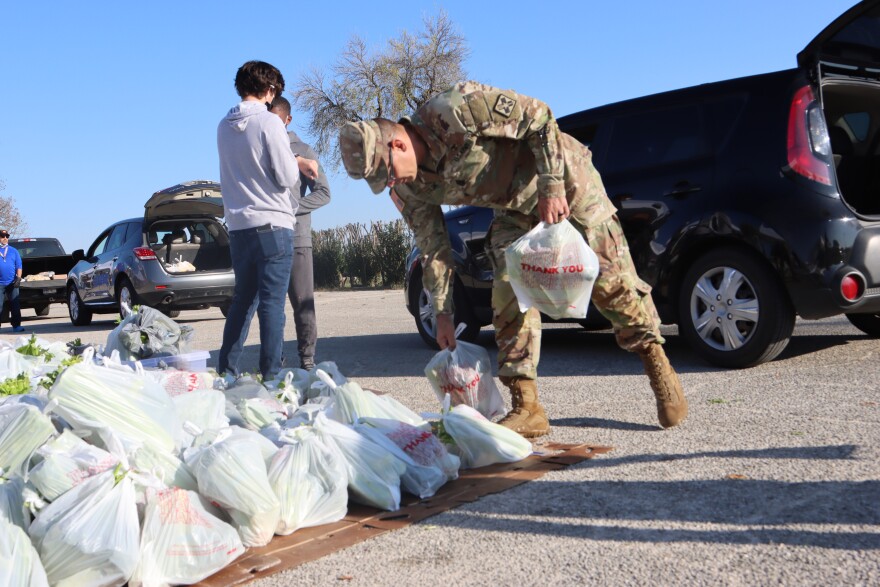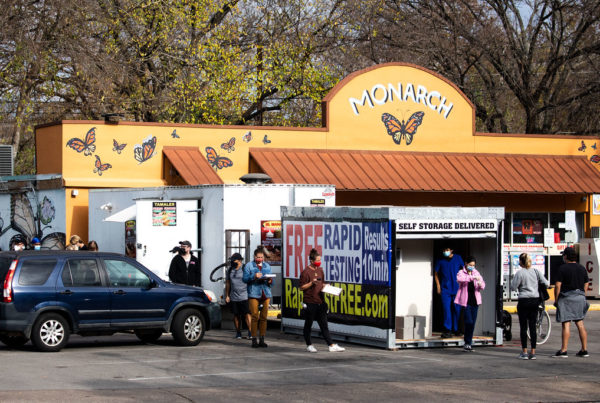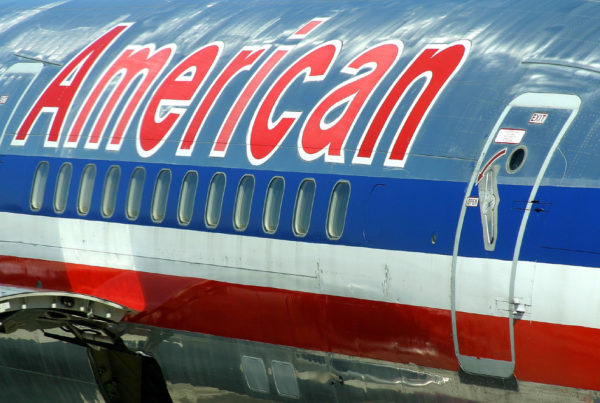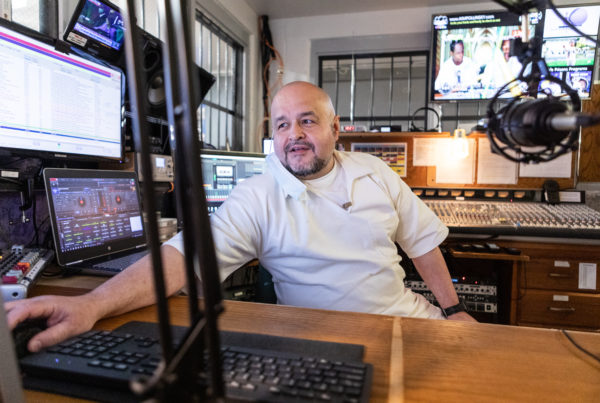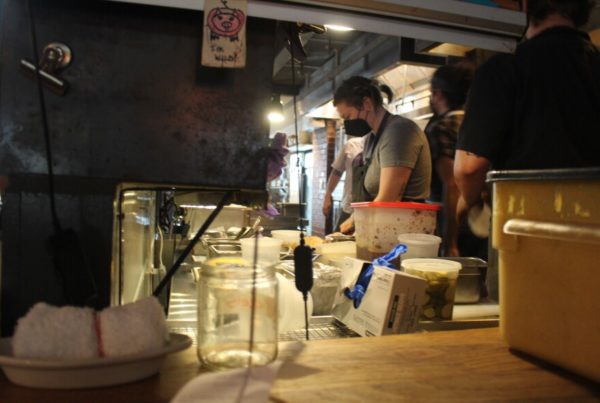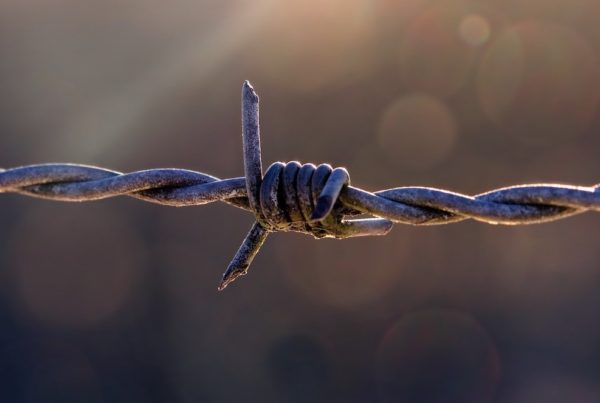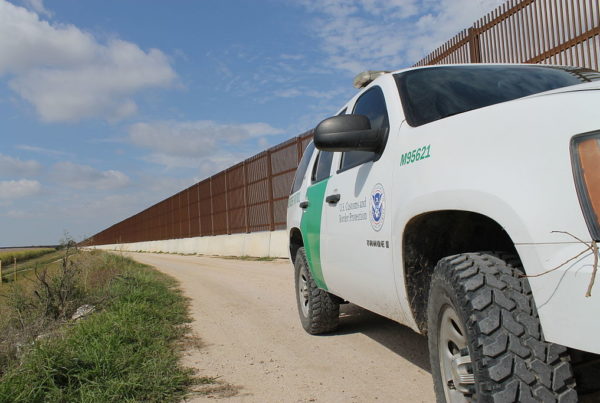From Texas Public Radio:
Soon after getting married, Tabetha Lamb and her husband — a second lieutenant in the Army — were moved to a base in Minot, North Dakota.
The move was challenging and not just because it started snowing in September and didnt’ stop. But because the two college graduates’ had to start paying back loans and his first paychecks in the new assignment weren’t correct — too low for his rank.
By Christmas, they were feeling the crunch.
“And there are a few times we got really, really nervous. I did not go to the food pantry at that point. Because he was an officer and it was really frowned upon,” said Lamb.
Rather than ask for help, the two racked up $5,000 in credit card debt. Lamb’s father was in the Air Force and they often struggled early in his career but she says the attitude in the military has been if you can’t make the ends meet, you aren’t being responsible.
“My God, my dad was working freaking three jobs, on top of being in the military, it wasn’t not knowing how to spend your money wisely. It’s just that there’s not enough income coming in,” she said.
Hunger in the Military has been a problem for decades. Often low-ranking service members have too little food and limited options. Twenty percent of active-duty respondents to a survey this year say they experienced food insecurity and more than 10 percent experienced hunger.
The problem was complicated by the pandemic when military spouses lost jobs or family members got sick. According to the U.S. Census, active military and reserve members experienced food insecurity at a rate far exceeding the nation. For much of the pandemic, they were double the national average.
Despite these eyebrow raising datapoints, there is very little academic research into the impacts on active duty military members. According to the USDA, only two papers have been published.
One published in May showed that one in three active duty military members was marginally food insecure and that food security played a role in retention and mental health.
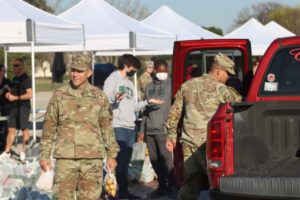
Servicemembers in U.S. Army North load cars with food shortly before Christmas 2021.
Paul Flahive / Texas Public Radio
In mid December, Congress passed a spending bill with additional pay for tens of thousands of families struggling to feed themselves as part of the National Defense Authorization Act. It isn’t clear that enough has been done though.
Decades after Minot, Lamb said the stigma and shame of asking for help are still present in the U.S. military. She sees it on the faces of active duty service members when she volunteers at mass food distributions with the San Antonio Food Bank.
At one just before Christmas at Fort Sam Houston, members of U.S. Army North bagged produce like celery, squash and potatoes — then quickly packed it into the trunks and truck beds of a long line of vehicles.
A servicemember dressed as Santa walked down the lone line of cars handing candy canes to people waiting for help.
“I used to be them,” said Command Sergeant Major Phil Barretto as he stood near the pallets of food to be given out. “I was a specialist with a child on the way, you know, the only household and I got a child,” he said.
Barretto said the line of cars — many of them active duty — was hard to see but he was excited to now be in a position where he could help.
“We have more service members in need — retirees as well — in need than we think,” he said. “A lot of them are just too proud to come out here.”
Wife and husband Angela and Andy Thompson waited in line in their neon green Kia soul in the line. Angela has cancer — which has put an extra burden on their income.
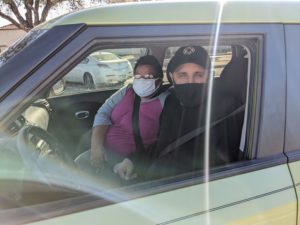
This is the first food distribution that Angela and Andy Thompson have attended.
Paul Flahive / Texas Public Radio
“The pay is sufficient to care for me and my family in completely normal circumstances. And anything complicated to it, there’s little bits here and there that come up short,” said Andy Thompson, an active duty Army Specialist.
Self-reliance is a foundational belief in the military and Thompson said that makes reaching out for help hard. But he believes the communication around resources has improved and that the stigma has lessened.
“It’s improved significantly. Asking for help is still something that is harder to do. But there’s a lot more resources out there for help if you need it. And there are a lot more willing to share that they’re there to encourage their use,” he said.
Most people TPR spoke with in the line of cars did not want to be identified. One woman sat in a large truck, with two children in pajamas sitting in the back seats.
“I don’t want people to realize that I have to ask for help.” she said “I’m a mom that can’t provide everything I can for my kids. It sucks. And everybody on the outside always thinks that we can take care of ourselves and sometimes we can’t.”
She and her husband are veterans. She said they used food pantries throughout their time in the service. And now, with a career-ending injury making her her husband’s caregiver, they need the help even more.
Her reluctance to be identified is not unusual.
“I remember, when we first started doing this, people didn’t even want to roll the windows down, to even speak to us,” said Christine Abraham, leader of the culinary wellness program on base.
The pandemic highlighted hunger to the nation. But she said when they started this on-base distribution a year ago — not everyone understood the need.
“I’ve seen a lot of angry people when it comes to (this). People are angry that we were doing this, ‘that wasn’t a problem when I was active duty,’ they told her. “I’m like, um, I don’t know what rank you might have been. It’s a problem. It’s always been a problem.”
Abraham grew up in the military and talked about her families struggle to make ends meet when her mom got sick with a terminal disease. They relied on growing their own vegetables each year.
“I didn’t realize what that was for. But I remember my dad saying, you know, this year, we’re gonna have enough tomatoes, enough green beans, we won’t have to buy anything until next spring,” she recalled.
The on-base distribution puts the problem on display and Abraham hopes it helps to normalize people asking for help. Today, they will help more than 250 households. She isn’t sure they will have enough.
“My fear is to turn people away. That hurts. You want the food to go to those families that need it. The idea that we won’t have enough hurts,” she said.
There are still barriers to military members accessing other federal food aid like SNAP, Abraham said. But glancing furtively at the line of cars…she was just worried about feeding the line of people that day.


